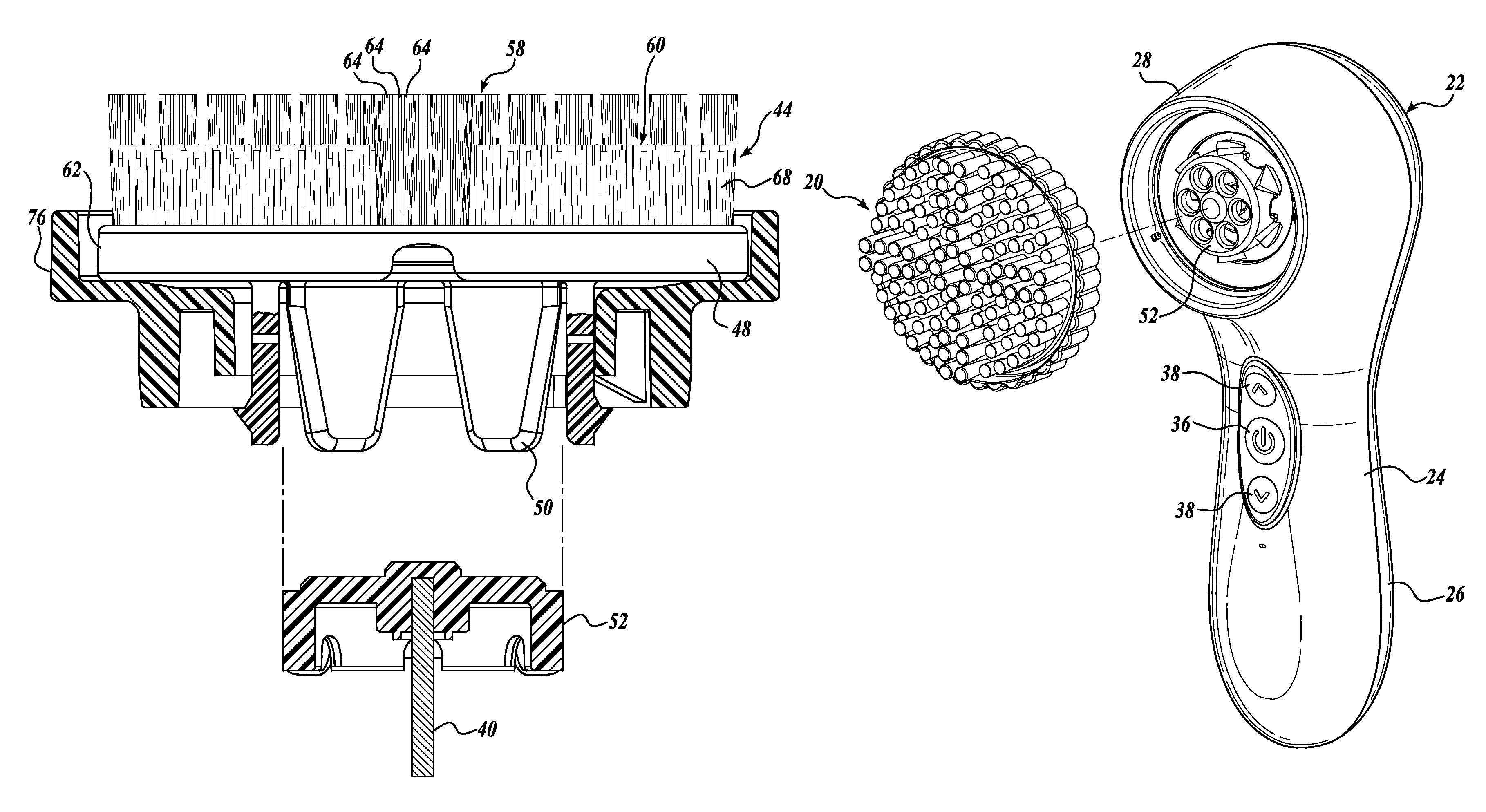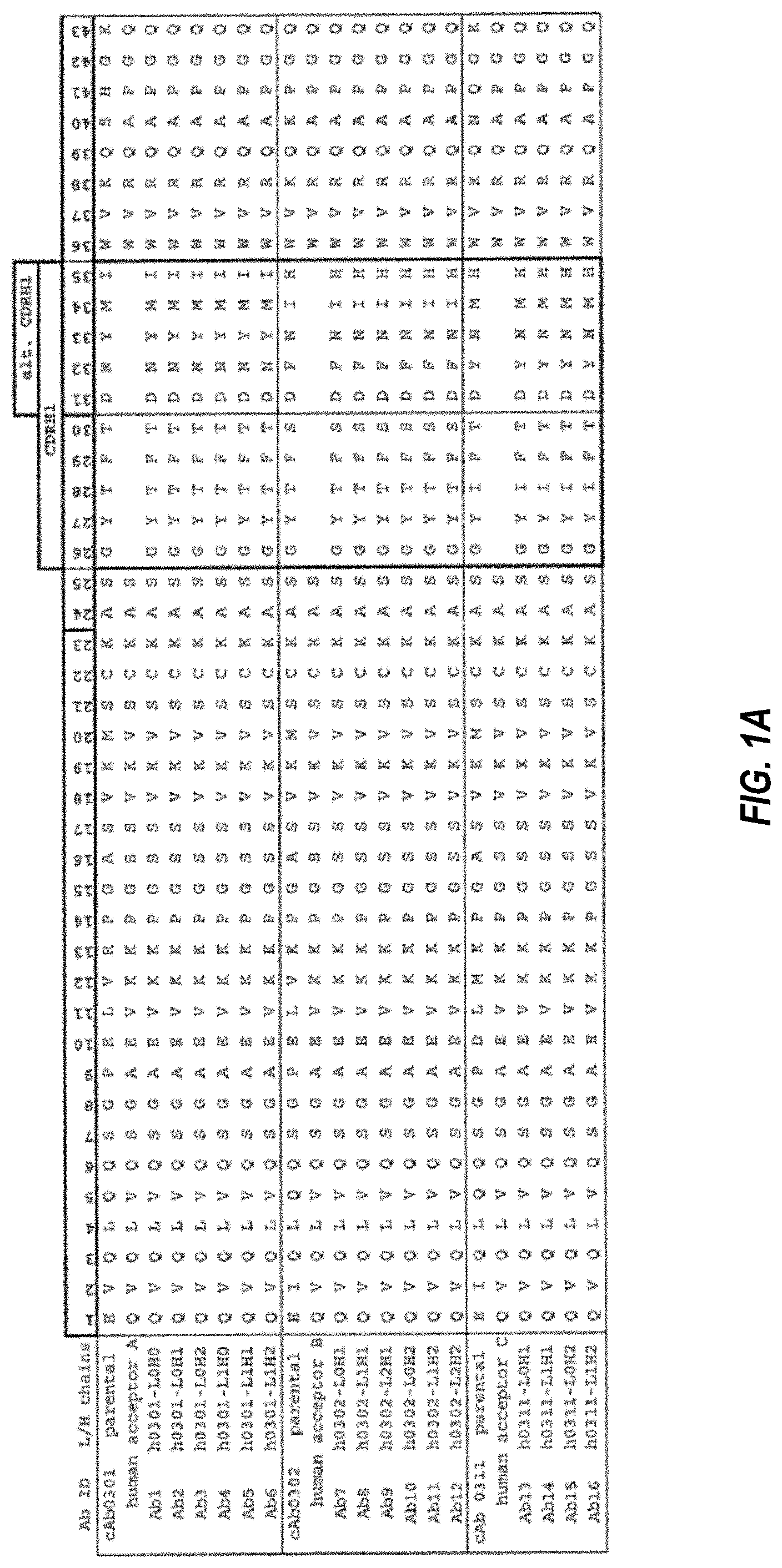Invented by Gerald Keith Brewer, Kenneth A. Pilcher, Robert E. Akridge, LOreal SA
Exfoliation is a crucial step in any skincare routine as it helps remove dead skin cells, unclog pores, and promote cell turnover. Traditionally, people used manual methods like scrubs or washcloths to exfoliate their skin. However, the introduction of exfoliating brushes has revolutionized the way people approach this essential skincare step.
The market for exfoliating brushes is vast, with a wide range of options available to cater to different needs and preferences. From high-end brands to affordable alternatives, consumers have a plethora of choices when it comes to selecting the perfect exfoliating brush for their personal care device.
One of the key factors driving the market growth is the convenience and effectiveness of these brushes. Exfoliating brushes are designed to provide a deeper cleanse and exfoliation compared to manual methods. The bristles of these brushes are often made from soft, synthetic materials that are gentle on the skin but still effective in removing impurities and dead skin cells.
Moreover, exfoliating brushes are compatible with various personal care devices, such as electric facial cleansers or body brushes. This compatibility allows users to customize their skincare routine according to their specific needs. Whether it’s targeting acne-prone areas, reducing the appearance of fine lines, or simply achieving a smoother complexion, exfoliating brushes offer versatility and adaptability.
Another significant factor contributing to the market growth is the increasing awareness of the benefits of exfoliation. Skincare enthusiasts and professionals alike emphasize the importance of regular exfoliation for maintaining healthy skin. As a result, consumers are actively seeking out exfoliating brushes to incorporate into their skincare routines.
Furthermore, the rise of social media and beauty influencers has played a significant role in popularizing exfoliating brushes. Many influencers and beauty gurus showcase their skincare routines, often featuring exfoliating brushes as a staple product. This exposure has led to increased consumer interest and a subsequent boost in the market for these brushes.
In terms of market trends, there has been a shift towards more sustainable and eco-friendly options. Many brands now offer exfoliating brushes made from biodegradable materials or with replaceable brush heads to reduce waste. This trend aligns with the growing consumer demand for environmentally conscious products and reflects the industry’s commitment to sustainability.
In conclusion, the market for exfoliating brushes for personal care devices has experienced significant growth due to the convenience, effectiveness, and versatility they offer. With consumers increasingly prioritizing skincare and seeking out innovative solutions, exfoliating brushes have become a must-have item in many beauty routines. As the market continues to evolve, we can expect to see more sustainable options and advancements in technology to further enhance the exfoliation experience.
The LOreal SA invention works as follows
Exfoliating brush heads for personal care appliances are disclosed. The exfoliating brush heads are oscillated by the personal care appliance to improve the smoothing and exfoliation on the epidermis of the patient, with or without prior application of a skin care formulation. The exfoliating brushhead may oscillate in rotation, translation, or any combination of these. The exfoliating brush is oscillated by the personal care device over the epidermis of the patient to remove dead cells. The exfoliating head can include first and/or second groups tufts.
Background for Exfoliating brush for a personal care device
As those in the know are well aware, thick calluses and corns form on the palms of hands or soles of feet as the epidermis becomes partly keratinized over time due to repeated contact between the hands or soles with hard or coarse surfaces. Calluses can be caused by regular contact with objects that put pressure on your hands, like tools or sporting equipment. Footwear such as high-heeled, tight, or loose-fitting shoes can cause calluses and corns. “The repeated pressure from contact causes the skin’s surface to harden and become protective.
Calluses or corns can be uncomfortable and painful. Calluses and corns can crack because of, for instance, dry or cool weather. This damages the dermis beneath the epidermis. It is necessary to remove calluses and corns periodically from the soles of feet or palms. This removal of corns or calluses from the feet or hands is called “a pedicure.
During a Pedicure, calluses, dry skin, and flaky skin on the bottom of your feet are scraped off or abraded.” The feet are usually soaked in warm water and/or treated with a topical cream to soften their skin. After the warm water or topical cream has softened the foot skin, the bottoms are scrubbed manually with a pedicure stone, which is a callus rasp or pumice. Some technicians use a corn-and-callus plane, which is a stainless steel blade with a stainless steel head, to remove thick and tough callus.
These conventional methods and devices for callus removal can be time-consuming, painful, inefficient and difficult. Some of the instruments are also dangerous. A callus plane, for example, can cause serious injuries if it is used incorrectly. To reduce the risk and negative effects of manual processes, it has been attempted to automate the removal of skin imperfections on the hands and feet. For example, many electrically powered rotary tools with sandpaper like contact surfaces were developed for grooming feet and hands. One such tool is sold under the name “Pedi-Smooth.” “However, it is still desirable to have improved devices that can remove calluses and rough patches of skin.
This summary presents a few concepts in a simplified format that will be further explained in the Detailed Description. This summary does not identify the key features of claimed subject matter and is not meant to be used to determine the scope of claimed subject matter.
According to aspects of the disclosure, an exfoliating head is provided for treatment of skin epidermis of a patient. The exfoliating head comprises a brush system that can be mounted to a drive mechanism to move the brush body. The exfoliating head includes a group of first tufts. Each tuft has a plurality bristles extending outwardly from the brush body. In certain embodiments, tufts from the first group can be configured to apply non-Newtonian liquid to rough areas of a patient?s epidermis. The exfoliating head includes a second tuft group, each of which comprises bristles extending outwardly from the brush body. The second group of bristles is configured in some embodiments to exfoliate rough areas of the epidermis of a patient when it comes into contact with them.
According to another aspect of this disclosure, a brush head for exfoliating a patient’s skin is provided. The exfoliating head comprises a brush, which is mounted to a drive mechanism that imparts oscillating movements to the brush, a first set of tufts with a plurality bristles extending outwardly from the body of the brush, and a pair of tufts for exfoliating a partially keratinized skin area, each of the tufts having a plurality bristles extending outwardly from the body of the brush. The tufts in the second group are more stiff than those of the first.
According to a further aspect of this application, there is a method for exfoliating epidermis from a patient. A motorized drive system is used to oscillate an exfoliating head with a first and second group of hairs. In certain embodiments, a second group of tufts is configured to exfoliate partial keratinized epidermis of the patient. The method includes also applying the second tufts to partially keratinized epidermis of the patient.
DESCRIPTION DU DRAWINGS
The following detailed description and the accompanying drawings will help you better understand the subject matter.
FIG. “FIG.
FIG. FIG. 1;
FIG. “FIG. 1;
FIG. “FIG. “1 adapted to be connected to components of an drive motor system
FIG. FIG. 1;
FIG. “FIG. “Figure 1 shows a personal care appliance on which the exfoliating brush head of FIG.
FIG. “FIG. The exfoliating brush is exploded from FIG.
FIG. “FIG. 6.
The detailed description below, in conjunction with the annexed drawings where like numbers refer to like elements, is intended as a descriptive of various embodiments and not as the only embodiments. The embodiments described herein are merely examples or illustrations and should not necessarily be construed to be superior or more advantageous than other embodiments. The examples are not meant to be exhaustive, nor to limit the subject matter claimed to the exact forms disclosed.
The following discussion gives examples of exfoliation systems, devices, or methods. Exfoliating brush heads are described in the examples. They can be used with personal care appliances. In some of the examples, the personal-care appliance oscillates an exfoliating head in order to improve smoothing and exfoliation. This is done with a fluid that softens skin, like a skin care formulation. In some examples, the exfoliating head of the personal care device is oscillated to improve smoothing and exfoliation without the use of a skin care formula.
In the examples given here, the exfoliating head can be oscillated in a rotational or translational manner, or even a combination of both. The exfoliating brush is oscillated by the personal care device over the epidermis of a patient to remove dead cells. In some embodiments the exfoliating head comprises first and second tuft groups, with the first and/or second tuft groups having different bristle lengths and/or stiffness. In these and other examples, the tufts in the first group have a greater pliability than those of the second group and are designed to deliver and apply non-Newtonian liquids, such as skin care formulas, to the treated skin. In other examples the tufts from the second group can be used to treat rough skin conditions such as corns and calluses that have formed on the hand or foot of a patient. The term “rough skin” is used in this document. “Rough skin” is defined as epidermis skin that has been partially keratinized. This includes skin conditions such as corns and contactus.
Click here to view the patent on Google Patents.









